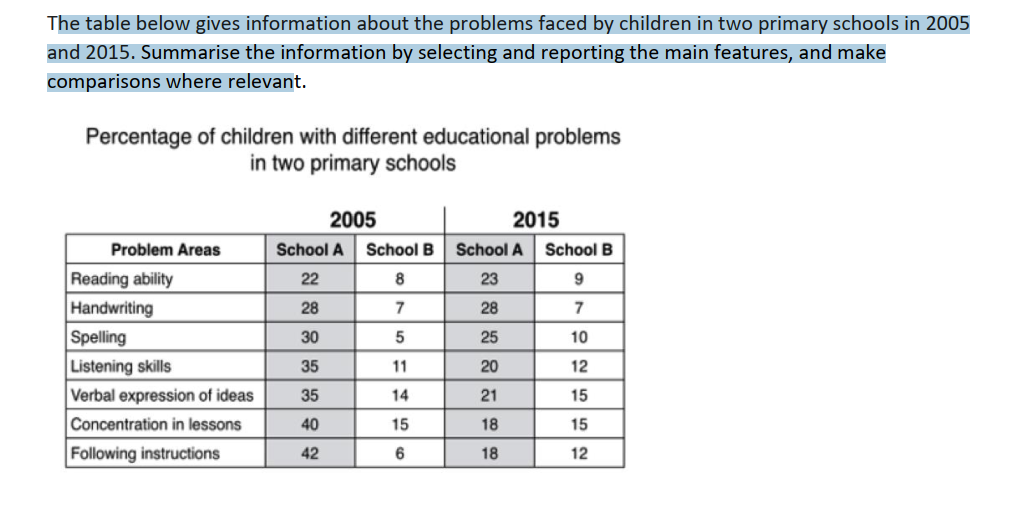chillout
Sep 28, 2022
Writing Feedback / [IELTS WTITING 1] the problems faced by children in two primary schools in 2005 and 2015 [3]
Please give some feedback about my writing. Thank you a lot!
The table describes data about the percentage of children in two elementary schools who had educational issues in two years 2005 and 2015.
Generally speaking, school A's students encountered more problems with education than students of school B, but the proportion of school A's students dropped significantly in 2015 compared to 2005.
In 2005, we saw a huge gap between the percentage of two school's students with educational problems. Most noticeably in following instructions issues with 36% higher belong to school A, other problem areas such as concentration in lessons, verbal expression of ideas, listening skills, spelling, handwriting, and reading ability gap around 20 to 30 percent.
The figures for 10 years later witnessed a dramatic decrease in the percentage of school A's students, except for two areas reading ability and handwriting which remained roughly the same. There was a moderate drop of 5% in the spelling area, and a substantial fall of around 15% in the remaining fields. The number of students in school B who struggled with educational issues remained nearly the same in 2015, except for two problems spelling and following instructions which doubled in the period shown.
Please give some feedback about my writing. Thank you a lot!
The table describes data about the percentage of children in two elementary schools who had educational issues in two years 2005 and 2015.
Generally speaking, school A's students encountered more problems with education than students of school B, but the proportion of school A's students dropped significantly in 2015 compared to 2005.
In 2005, we saw a huge gap between the percentage of two school's students with educational problems. Most noticeably in following instructions issues with 36% higher belong to school A, other problem areas such as concentration in lessons, verbal expression of ideas, listening skills, spelling, handwriting, and reading ability gap around 20 to 30 percent.
The figures for 10 years later witnessed a dramatic decrease in the percentage of school A's students, except for two areas reading ability and handwriting which remained roughly the same. There was a moderate drop of 5% in the spelling area, and a substantial fall of around 15% in the remaining fields. The number of students in school B who struggled with educational issues remained nearly the same in 2015, except for two problems spelling and following instructions which doubled in the period shown.

table1.png
